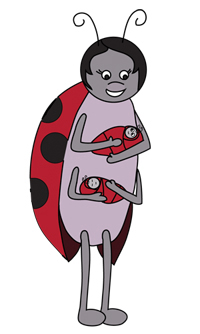|
Insect collectors soon become very familiar with the behavior and habitats of insects they collect. They not only know where to look, but also what life stages are apt to be present. When a strange-looking caterpillar, beetle grub, or bug nymph is found, or when an odd-appearing larva is seined from the bottom of a pond, or even a mass of tiny insect eggs is found, it is only natural for the collector to wonder what the insect is and what it might look like as an adult when its life cycle is complete. These questions can be answered by rearing the insects.
To rear insects and observe them as they pass through their various stages of development helps the collector more easily recognize the insects. Rearing insects also adds to the pleasure of collecting and studying them. Some collection or display-box rules mandate that only the adult-stage insect may be included. Rearing an insect from the immature stage to the adult stage is not only educational, but also results in a nice addition to the collection.
Many kinds of rearing cages are used, most of which are constructed of screen to prevent escape of the adults as they emerge. Most insects are easy to rear, if you give them an environment similar to the one in which they were found. For example, to rear a caterpillar found on oak leaves, regularly add fresh oak leaves for it to eat until it pupates. Unless you are familiar with the habits of the insect being reared, it is best to always provide a few inches of soil in the bottom of the rearing cage because many insects need soil in which to transform.
Rear aquatic insects by placing them in an aquarium with the proper environment. As with fish, the water must be properly aerated. Aquaria and air pumps are purchased from pet supply stores. Aquatic insects also need access to the kind of food on which they naturally feed, such as tiny aquatic plants or other organisms.
|

